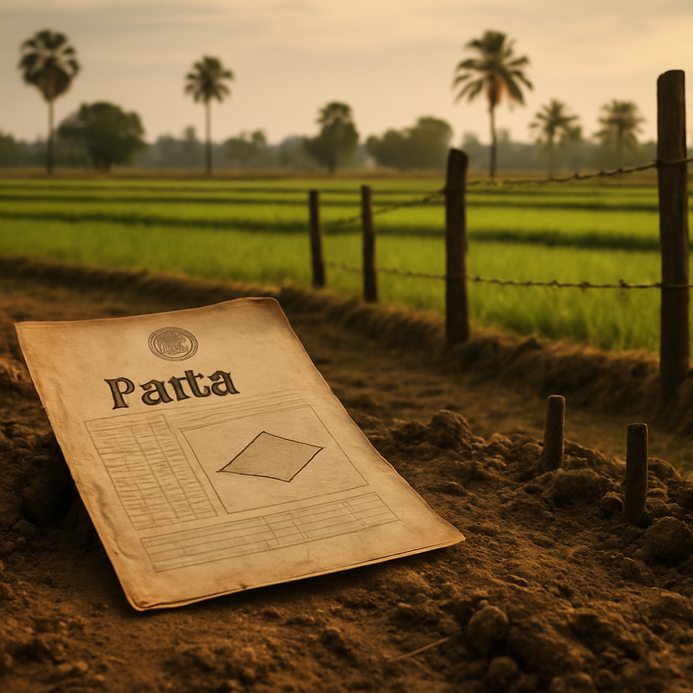Property Transfer Act India: How to Legally Transfer Property to Family in 2025?
- 1 Understanding the Transfer of Property Act: An Overview
- 2 Section 53A of the Transfer of Property Act: Ensuring Security and Protection
- 3 Family Property Transfers: Different Methods and Their Implications
- 4 Avoiding Disputes: Best Practices for Family Property Transfers
- 5 Navigating Legal Procedures: Step-by-Step Guide to Family Property Transfer
- 6 FAQ
Understanding the Transfer of Property Act: An Overview
So, let’s talk about the Transfer of Property Act, 1882. It’s got the deal on property rights in India. Understanding the key parts? Super helpful when you’re dealing with legal stuff. The act breaks down definitions, key terms, and principles around property movement, think gifts, leases, mortgages.
Key Provisions of the Transfer of Property Act, 1882
1. Types of Transactions: The act lays out different ways property can change hands, sales, leases, exchanges. Knowing this clarifies what each situation means legally.
| Type of Transfer | Description |
| Sale | You hand over ownership for a price. |
| Lease | A landlord lets a tenant use the property for a time. |
| Gift | Giving property without expecting anything back. |
2. Section 53A: This one’s about protecting the rights of the buyer in certain situations. It makes sure the seller can’t just backtrack if there’s a written deal and the buyer’s in the property.
3. Registration Requirements: For a legal transfer to hold up, some documents need to be registered as per the act. This helps sort out ownership disputes and keeps titles clear.
Recommendations to Avoid Disputes
You want to keep family peace during property transfers? Good documentation can help. Here’s what to think about:
– Written Agreements: Always put it in writing, don’t rely on memory.
– Consult Legal Pros: A little expert help goes a long way to clear up confusing paperwork.
– Talk Openly: Don’t keep everyone in the dark. Lay out your plans with family upfront to avoid hard feelings.
Getting the hang of the Transfer of Property Act, 1882? That’s how you navigate matters smoothly.
For more info, dive into resources on property transfer laws and environmental property transfer regulations.
And if you’re curious about Gift Deeds versus Wills or the Stamp Duty and Registration Act, check those out.
Section 53A of the Transfer of Property Act: Ensuring Security and Protection
Section 53A is a big deal in the Transfer of Property Act, 1882. It ensures buyers are protected when a property agreement is in play. Even if the transfer isn’t finalized, this provision keeps the seller from trying to deny the buyer’s rights. Get to know this rule, it’s vital for smooth property transitions within families.
Key Provisions of Section 53A
1. Buyer Protection: If you’ve taken steps like making a payment or improving the property, you have a right to stay in it.
2. Seller Limits: Once the seller accepts the buyer’s actions, they can’t whip up another agreement against them.
3. Binding Nature: This section makes sure that even if the formal ownership change isn’t done, the buyer’s interest is still safe like holding their own rights.
Why Following Section 53A Matters
Keeping compliant with Section 53A? It pays off in several ways:
| Aspect | Benefit |
| Legal Certainty | Protects buyers against seller claims. |
| Dispute Prevention | Cuts down the likelihood of arguments later. |
| Enhanced Trust | Fosters confidence in family dealings. |
Using this section right can help dodge legal troubles and build trust in how families deal with property. Just remember to document everything well and get legal advice when necessary.
For more insights on the Transfer of Property Act, check out this detailed overview of the Transfer of Property Act, 1882.
Digging into property transition details is key for families. Check related reads like the Gift Deed vs. Will or learn about Relinquishment Deed Explained for more clarity on estate topics.
Family Property Transfers: Different Methods and Their Implications
Transferring property within families can be done in a handful of ways. And each method carries its own legal weight, all governed by the Transfer of Property Act, 1882.
Gift Deeds
A gift deed is when one family member gives property to another without expecting anything in return. To be valid, it’s gotta be written, signed by the giver, and have at least two witnesses, plus, if it’s land, you’ll need to register it (Source).
| Aspect | Description |
| Validity | Needs registration if it’s an immovable property. |
| Execution | Must be a written and signed document. |
| Tax Implications | Can incur stamp duty or inheritance taxes. |
Inheritance
Another common way to transfer property? Through inheritance. The property usually passes to heirs based on succession laws. Section 53A protects the rights of those who’ve got possession even from unregistered transfers (Source). A will can help clarify how things will be divided.
| Aspect | Description |
| Law Reference | Involves Section 53A of the Transfer of Property Act. |
| Legal Form | Requires a documented will or following inheritance laws. |
| Tax Considerations | Estate taxes can apply. |
Settlements
Settlements cover those arrangements where property ownership gets shuffled around as part of family deals. These can get complex since they might affect taxes and trust concerns, and they usually protect all family members involved (Source).
| Aspect | Description |
| Nature of Transfer | May involve trusts or shared ownership. |
| Legal Implications | Can influence beneficiaries and tax duties. |
| Documentation | Need clear agreements with structured terms. |
Grasping these methods and their consequences? It can help avoid conflicts down the road and make family property transfers smoother.
For more on property transition management, check out these articles: Documents Required for Legal Heir Certificate, Gift Deed vs. Will: Navigate The Property Transfer Act, and Understanding the Importance of Title Deeds.
Avoiding Disputes: Best Practices for Family Property Transfers
Keeping property transfers smooth within a family? You gotta stick to the Transfer of Property Act, 1882. Here are some solid practices:
1. Understand the Transfer of Property Act, 1882
This act is the backbone of property transfers in India. It outlines how things should go down legally. For family transactions, following things like Section 53A is key, this helps protect buyers from backtracking by original owners once the property’s in their possession.
| Key Sections | Description |
| Section 53A | Shields buyers with possession from the original owner reclaiming property after a sale. |
| Section 18 | Stipulates registration requirements for clear property transfer. |
| Section 31 | Covers conditional transfers, clarifying expectations for property use. |
2. Communicate Openly Among Family Members
Clear communication goes a long way. Discuss everyone’s interests and expectations early on. Verbal agreements are kinda risky, make sure everyone is clear on ownership, property value, and future plans.
3. Draft Formal Documents
Put everything in writing, always. Create a property transfer deed detailing the terms. A well-done deed, compliant with the Transfer of Property Act, protects against any future drama. And if no money is changing hands, consider using a gift deed.
4. Consult Legal Professionals
Getting a property lawyer or real estate expert? Totally worth it. They can guide you through the legalities and paperwork, cutting out errors that might lead to disputes.
5. Keep Records and Use an Independent Title Search
Keep track of everything related to the transfer. That means documenting all communications too. Plus, an independent title search will make sure there aren’t any hidden risks with the property.
For more insights, check out these resources:
– Transfer of Property Act, 1882
– The Illinois Responsible Property Transfer Act
– Connecticut Property Transfer Act Overview
For further guidance, consider these internal articles: Documents Required for Legal Heir Certificate and Real Estate Investment Insights.
Transferring property in the family can be a whole lot easier if you follow the Transfer of Property Act, 1882. Stick to these legal steps to avoid disputes and make everything run smoothly.
Step 1: Get the Basics of the Transfer of Property Act
This act sets the stage for property transfers in India. It’s essential to know how the transfer process works and its importance for legal trade-offs.
Table: Key Sections of the Transfer of Property Act
| Section | Description |
| Section 5 | Defines what “transfer of property” means. |
| Section 53A | Protects those who have possession of the property. |
| Section 61 | Talks about the rights of both transferors and transferees. |
Knowing these sections ensures all parties understand their roles and rights.
Step 2: Documentation
Documentation is super important. Prepare these documents:
1. Title Deed: Shows who owns what.
2. Gift Deed or Will: Based on how you’re transferring.
3. NOC from Co-Owners: If others co-own the property, you’ll need this.
4. Identity Proofs: For both the transferor and transferee.
For a full rundown on document needs, check out this guide on legal heir certificates.
Step 3: Registration Process
Once you’ve got your documents ready, hit up the local sub-registrar. You must register the transfer to make it valid, as per the Transfer of Property Act. Both parties (and witnesses, too) need to be there.
Step 4: Compliance with Local Laws
Be aware, local laws might have extra steps or requirements. Consult them to ensure you’re complying. This helps keep everything above board.
Step 5: Seek Legal Assistance
Don’t go it alone. Legal help can iron out bumps. A good lawyer will guide you through tricky issues and confirm you’re following all the regulations needed.
For more on property transfer details, read this comprehensive overview of the Transfer of Property Act, 1882.
Stick to these steps and keep legal frameworks in mind, and you’ll handle family property transfers like a pro—making sure everything is clear and avoiding disputes along the way.
FAQ
1. What is the Transfer of Property Act, 1882?
The Transfer of Property Act, 1882 is a law in India that governs the transfer of property rights, detailing the procedures and roles of the involved parties.
2. How does Section 53A protect buyers?
Section 53A provides protection to buyers who have possession of the property, preventing sellers from denying their rights even if the transfer is not formally completed.
3. What documentation is needed for family property transfer?
Essential documents include a title deed, gift deed or will, a No Objection Certificate (NOC) from co-owners, and identity proofs of the transferor and transferee.
4. Why is registration important in property transfer?
Registration is critical to validate the transfer and provide legal protection against ownership disputes.
5. What are the implications of transferring property through a gift deed?
A gift deed requires proper documentation, may incur taxes, and must be executed and registered according to the law to be valid.













